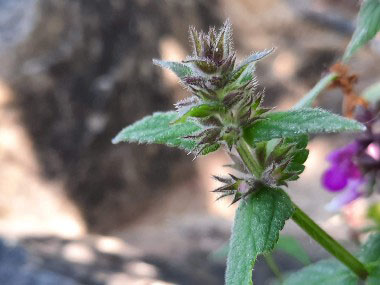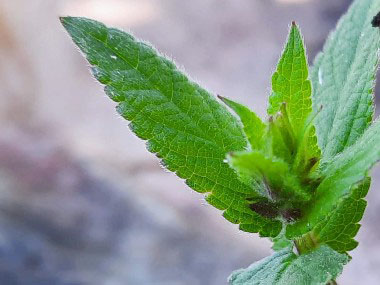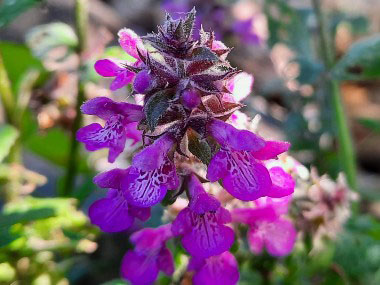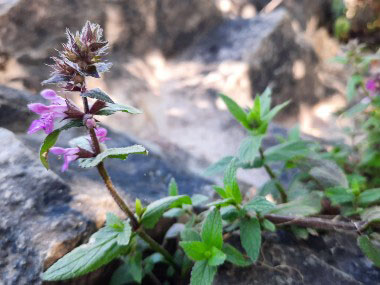






To support our efforts please browse our store (books with health benefits, etc.).
This is a unique plant in the Lamiaceae (mint) family. It is also known as marsh hedge nettle, hairy hedge nettle, and clown’s woundwort. Marsh woundwort is native to western Europe north of Mediterranean coastal regions and through eastern Europe to central Asia and northwestern China. It has naturalized in eastern North America. Historically, marsh woundwort leaves were used to heal cuts and other wounds for centuries and it was described at length in Gerard’s Herbal. Pharmaceutical and clinical studies in the former Soviet Union indicated that extracts from this plant showed promising antiseptic, sedative, anti-inflammatory and other medicinal properties.
Distinguishing Features
Marsh Woundwort is an erect perennial plant. As with other members of the Stachys genus, the solid stems of Marsh Woundwort have a square cross section, and they may be either unbranched or very occasionally branched. The stems are noticeably hairy, particularly in the upper region of the plant, and there are nodes widely spaced along the stem. The pink to lavender coloured flower is whorled around the stem.
Flowers
Flowers are whorled around the stem, usually in groups of 6 in a spike-like cluster at the top of the stem and at the end of branches arising from leaf axils in the upper plant. Individual flowers are 1.25 to 1.5cm (½ to ¾") long. The outside of the upper lip is covered in short hairs, and the lower lip is lobed in 3 parts. Flowers are pink to lavender with white and darker purplish spots on the inside of the lower lip. There are 4 dark purple stamens under the upper lip. Flowers from June to September.
 Fields
of Nutrition has medicinal benefits and vitamin/mineral content of Marsh Woundwort.
Fields
of Nutrition has medicinal benefits and vitamin/mineral content of Marsh Woundwort.
Leaves
Leaves grow opposite, short-stalked to stalkless. The blade is linearly lanceolate with a shallowly cordate–round base. Leaves are light green, hairy, with the margin regularly shallow-toothed. On average leaves measure 10cm (4") long and 4.5cm (1¾") across.
Height
This plant grows anywhere from 20–100 cm (8 to 40"). The stem is often ascending, usually unbranched, hollow, and 4-edged.
Habitat
Marsh woundwort is found along shores, ditches, swamps, fens and along stream banks.
Edible Parts
Tubers can be eaten raw or cooked. This is nutritious food that has a pleasant mild nutty flavour. The tubers can be dried and ground into a powder that can be used in baking. Young shoots are edible but should be cooked. Seeds and flowers are also edible.
Other Name
Marsh Hedge Nettle.
Winter Survival Food Handbook

PDF Plant Magazines
Types of Wild Food
Geographic Zones Seasons
Disclaimer
EdibleWildFood.com is informational in nature. While we strive to be 100% accurate, it is solely up to the reader to ensure proper plant identification. Some wild plants are poisonous or can have serious adverse health effects.
We are not health professionals, medical doctors, nor are we nutritionists. It is up to the reader to verify nutritional information and health benefits with qualified professionals for all edible plants listed in this web site. Please click here for more information.
Why Edible Wild Food?
- Food costs are rising
- Free, wild food is readily abundant
- Wild food adds nutrition to your diet
- Wild food can help treat various medical conditions





